National Healthcare Quality and Disparities Report
Latest available findings on quality of and access to health care
Data & Analytics
- Data Infographics
- Data Visualizations
- Data Tools
- Data Innovations
- All-Payer Claims Database
- Consumer Assessment of Healthcare Providers and Systems (CAHPS®) Program
- Healthcare Cost and Utilization Project (HCUP)
- Medical Expenditure Panel Survey (MEPS)
- National Healthcare Quality and Disparities Report Data Tools
- Network of Patient Safety Databases
- AHRQ Quality Indicator Tools for Data Analytics
- Surveys on Patient Safety Culture
- United States Health Information Knowledgebase (USHIK)
- Data Sources Available from AHRQ
Data Resources
Filter by Topic
- Access to Care (4)
- Adverse Events (1)
- Ambulatory (2)
- By Payer (2)
- By State (3)
- Children (3)
- Children (1)
- Children/Adolescents (1)
- Clinicians (1)
- Community Pharmacies (1)
- Costs (2)
- Costs & Charges (1)
- Coverage (4)
- Data (3)
- Discharges by State (1)
- Disparities (2)
- Elderly (1)
- Element Definitions, Values & Information Models (1)
- Emergency Departments (4)
- Employer (1)
- Estimates (State & Metro) (1)
- Expenditures & Projections (3)
- Health (5)
- Health Care (8)
- Health Conditions (5)
- Health Plans (3)
- Health Systems (1)
- Hospital Characteristics (2)
- (-) Hospitalizations (10)
- Household Spending (1)
- Injuries Seen (1)
- Inpatient Care (1)
- Insurance (9)
- Medicaid (1)
- Medicare (1)
- Men (1)
- Mental Health (3)
- Mental Health and Substance Abuse Disorders (2)
- Obesity (1)
- Opioids (1)
- Patient Experience (1)
- Payment Sources (1)
- Premiums (1)
- Prescription Drugs (1)
- Preventable (1)
- Private (1)
- Quality (3)
- Readmissions (2)
- Safety Culture (1)
- SCHIP (1)
- Spending (2)
- State (1)
- Surgery (3)
- Systematic Review (1)
- Systems - Characteristics (1)
- Uninsured (2)
- Use (3)
- Visits (2)
- Women (2)
Data Resources
The Agency for Healthcare Research and Quality (AHRQ) offers practical, research-based tools and other resources to help a variety of health care organizations, providers and others make care safer in all health care settings.
Results
1-10 of 10 Resources displayed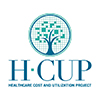
These HCUP Statistical Briefs provide general statistics about the cost of hospital stays in the United States, including the most costly conditions (diagnoses) and procedures.
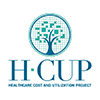
These HCUP Statistical Briefs provide general statistics about hospital stays in the United States, including an overview of the most frequent conditions (diagnoses) seen and the most frequent procedures performed in hospitals.
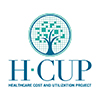
These HCUP Statistical Briefs provide statistics about potentially preventable or avoidable hospitalizations in U.S. hospitals.
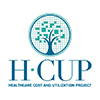
These HCUP Statistical Briefs provide statistics about readmissions to U.S. hospitals, including readmissions involving specific conditions (diagnoses) and procedures.
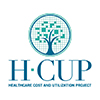
HCUPnet is a free, on-line query system based on data from HCUP. The system provides health care statistics and information for hospital inpatient, emergency department, and ambulatory settings, as well as population-based health care data on counties.
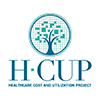
The Kids' Inpatient Database (KID) is the only all-payer pediatric inpatient care database in the United States, containing data from two to three million hospital stays. Its large sample size is ideal for developing national and regional estimates and enables analyses of rare conditions, such as congenital anomalies, as well as uncommon treatments, such as organ transplantation.
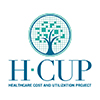
The National (Nationwide) Inpatient Sample (NIS) is the largest all-payer inpatient care database in the United States, containing data on more than seven million hospital stays. Its large sample size is ideal for developing national and regional estimates and enables analyses of rare conditions, uncommon treatments, and special populations.

The Nationwide Readmissions Database (NRD) is a unique and powerful database designed to support various types of analyses of national readmission rates for all payers and the uninsured. The NRD includes discharges for patients with and without repeat hospital visits in a year and those who have died in the hospital. Repeat stays may or may not be related. The criteria to determine the relationship between hospital admissions is left to the analyst using the NRD. This database addresses a large gap in health care data - the lack of nationally representative information on hospital readmissions for all ages.
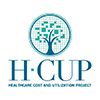
The State Ambulatory Surgery and Services Databases (SASD) are part of the family of databases and software tools developed for the Healthcare Cost and Utilization Project (HCUP). The SASD include encounter-level data for ambulatory surgeries and may also include various types of outpatient services such as observation stays, lithotripsy, radiation therapy, imaging, chemotherapy, and labor and delivery. The specific types of ambulatory surgery and outpatient services included in each SASD vary by State and data year. All SASD include data from hospital-owned ambulatory surgery facilities. In addition, some States include data from nonhospital-owned facilities.
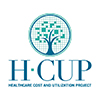
The State Inpatient Databases (SID) are State-specific files that contain all inpatient care records in participating states. Together, the SID encompass more than 95 percent of all U.S. hospital discharges. The uniform format of the SID helps facilitate cross-state comparisons. In addition, the SID are well suited for research that requires complete enumeration of hospitals and discharges within geographic areas or states.



